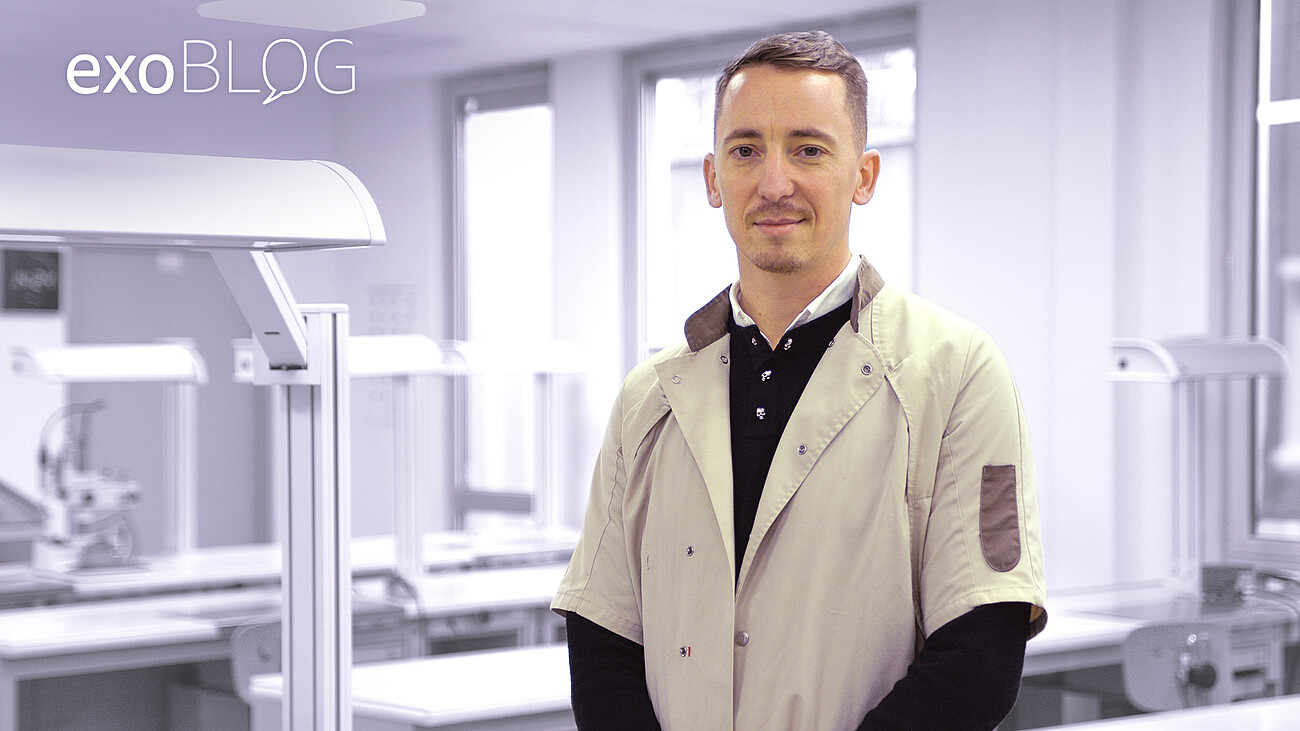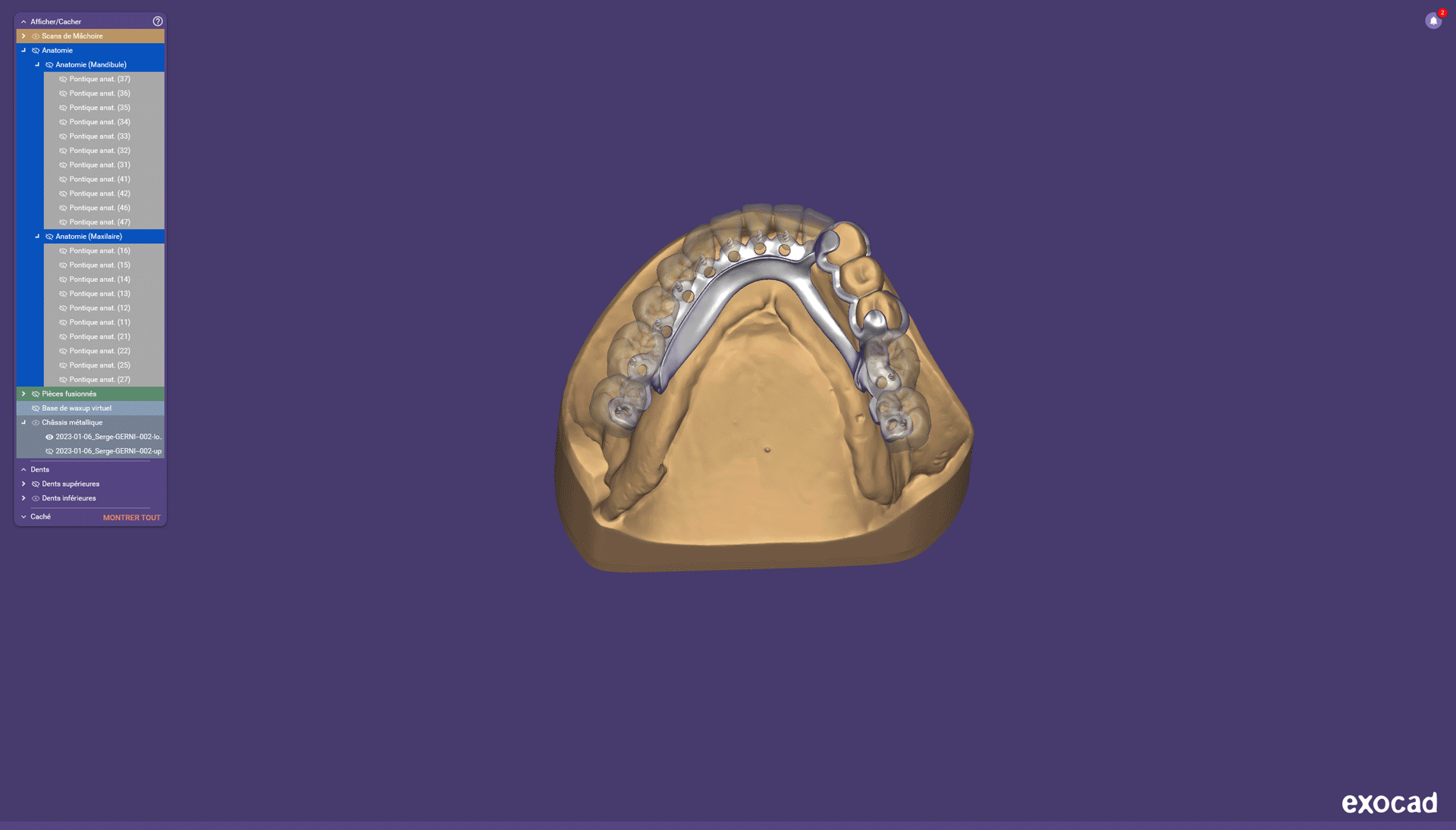New tricks for old school removables
The digital wave has swept through most areas of restoration design, with the exception of removables. But that’s changing. More young and talented lab technicians like Gabriel Sirbu in Rennes, France, see digital workflows as the key to making partial dentures fun, fast and precise. Gabriel explains how he creates exceptional designs using exocad’s PartialCAD and why he thinks more lab techs schooled on traditional approaches should try it too.
Q: Can you tell us a little about yourself and what you do?
A: I’m 34 years old and the father of two young girls. I’ve been working in dental since I was 17. I'm also a speaker at the dental center of apprentices, focusing on ceramics. And sometimes I do PartialCAD training for other dental technicians. I like my family, my job and sports.
Q: What type of lab do you work at?
A: I work at a small lab in L’Hermitage, France, called CERA’NAT. There are two apprentices, one employee for the plaster work, and my boss.
Q: How did you get started using exocad for your designs?
A: My boss bought DentalCAD, and I trained on it. I liked it because I could draw on my traditional experience and learn something new at the same time. I learned mostly by watching online tutorials, my reseller’s hotline and practicing by myself. Adding digital workflows was a big revolution in the daily work of our lab.
Q: Would you say it's a transferable skillset from being able to do it by hand and then to the screen?
A: Yes, definitely. I can do everything in the traditional techniques—fixed, ceramic and metal forms, and implantology. These traditional skills make learning on exocad software much faster and more intuitive. For me, the key is my experience with analog dental technology. This knowledge helps me create good outlines and good formations when I’m using PartialCAD.
“I design all of my removable metal framework cases on PartialCAD because it's very freeing. I like the software because I have the same feeling as when I work with my hands.”
Q: How do you use PartialCAD as part of your workflow?
A: I design all of my removable metal framework cases on PartialCAD because it's very freeing. I like the software because I have the same feeling as when I work with my hands. I can transfer my manual dental skills to the software and be very creative. And I like that I can take any STL file and put it into my PartialCAD project, and add a signature or logo.
Q: Do you have a favorite feature in PartialCAD?
A: I like the clone wax feature. You can build your wax structure in incremental thicknesses and calibrate as you go. This offers absolute control and increased accuracy of the cloned framework design.
Q: What's the biggest benefit you see using digital methods over traditional waxing and designing by hand?
A: For partial frameworks, the benefit is that you click, and it is correct. You don't have to use too much wax. You click on the tool, and it calibrates. It's very precise. Because when you pour wax, it can be too hot or too cold. Everything in PartialCAD is precisely calibrated, thus the results are predictable. It’s very relaxing for me, especially when I have a lot of work.
See some of Gabriel's digitally produced partials using PartialCAD.
Q: A lot of technicians who design removables have not yet made the switch to digital like you. Why do you think that is?
A: I think when you have experience in traditional techniques and everything is going well, you don't feel the need to learn something new. But I think the fixed prosthesis, the fixed restoration, is easier when you CAD it. The metal framework removable design is a complicated shape, and you need to learn the theory, the practice and then learn the CAD design. With the development of the digital dental impression, I think this will quickly evolve.
Q: Any advice for other lab techs?
A: You need to like your job and constantly learn. Watch tutorials online but also learn traditional techniques. Do not hesitate to enroll in trainings. It will save you a lot of time and avoid losing too much hair.
Q: Favorite song?
A: I like the song “Part Twelve” by Paul Kalkbrenner because it is a bit futuristic and fast-paced like PartialCAD.
Q: Favorite tooth?
A: The single central. Everything in a smile follows suit, and it’s the most challenging tooth to copy and get correct—it’s also the most visible. Get this right, and everything else will fall into place.
Q: If you could go somewhere for a weekend, where would you go?
A: Honestly, I like my home. But my wife would probably like it if we spent some time near the ocean.
Q: If you could give advice to your younger self, what would you say?
A: You need to be passionate. You need to watch closely to learn, and, if you do, you’ll have great technique later.
Q: One word for exocad?
A: Chameleon because you can create designs on exocad software with every kind of color and shape.
Q: Which designers do you follow on social networks?
A: I follow this great designer of removables on Instagram and YouTube.
Gabriel Sirbu was born in Nantes, France. After a high school career in science and engineering technology, at the age of 17, he embarked on an apprenticeship at the Faculté des Métiers of Ker Lann. He refined his education at the CIFAC in Caen, including seven years of apprenticeship. In 2008, he was voted “one of the best apprentices in France at the national level.” After obtaining his BTMS, Gabriel returned as a speaker to train students at the Faculté des Métiers of Ker Lann. Always motivated to discover new techniques and technologies, the arrival of CAD/CAM has allowed him to combine traditional and digital techniques and develop expertise in exocad software. He has two children, 18 years of experience in dental and maintains the vision of a young apprentice by aiming to evolve and learn on a daily basis. Gabriel offers training for dental technicians on PartialCAD, drawing on his training both in the traditional and digital fields. He is especially grateful for his team, Nathalie for her trust and Benoit for his professionalism.

by Caitlan Reeg
Writer at exocad
Caitlan Reeg spends her days telling the world about the innovations her colleagues create. She’s passionate about healthcare, technology, and the ways the two interact to improve our lives. A former journalist, Caitlan has worked on staff at Dow Jones Newswires in Frankfurt and at the national public radio program Marketplace in Los Angeles.





